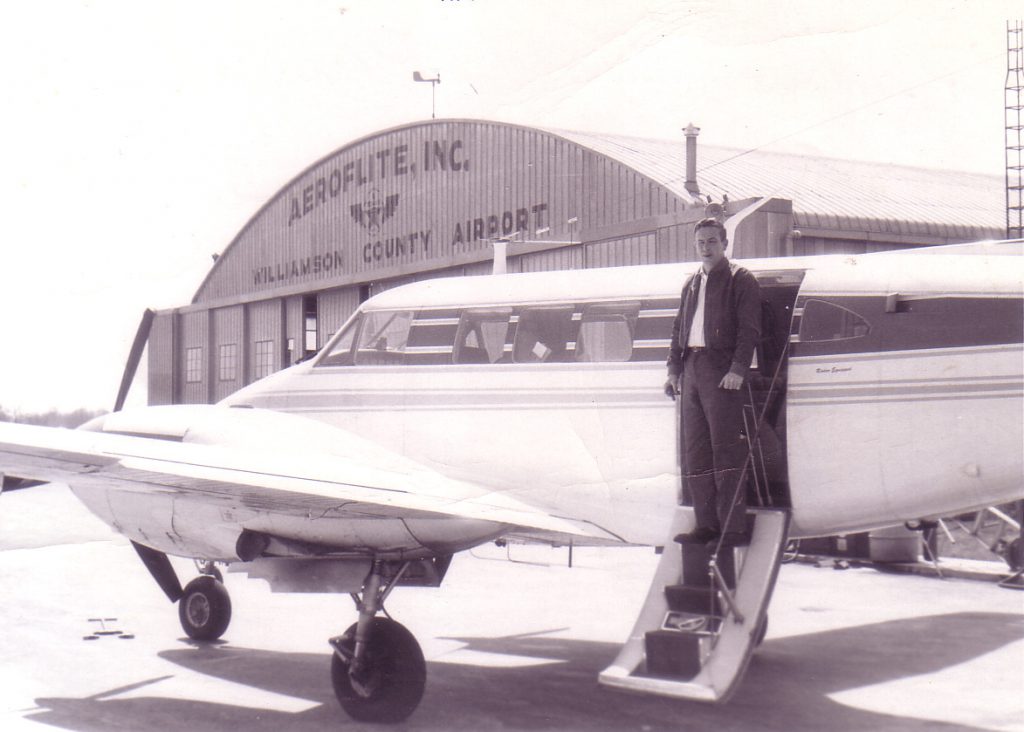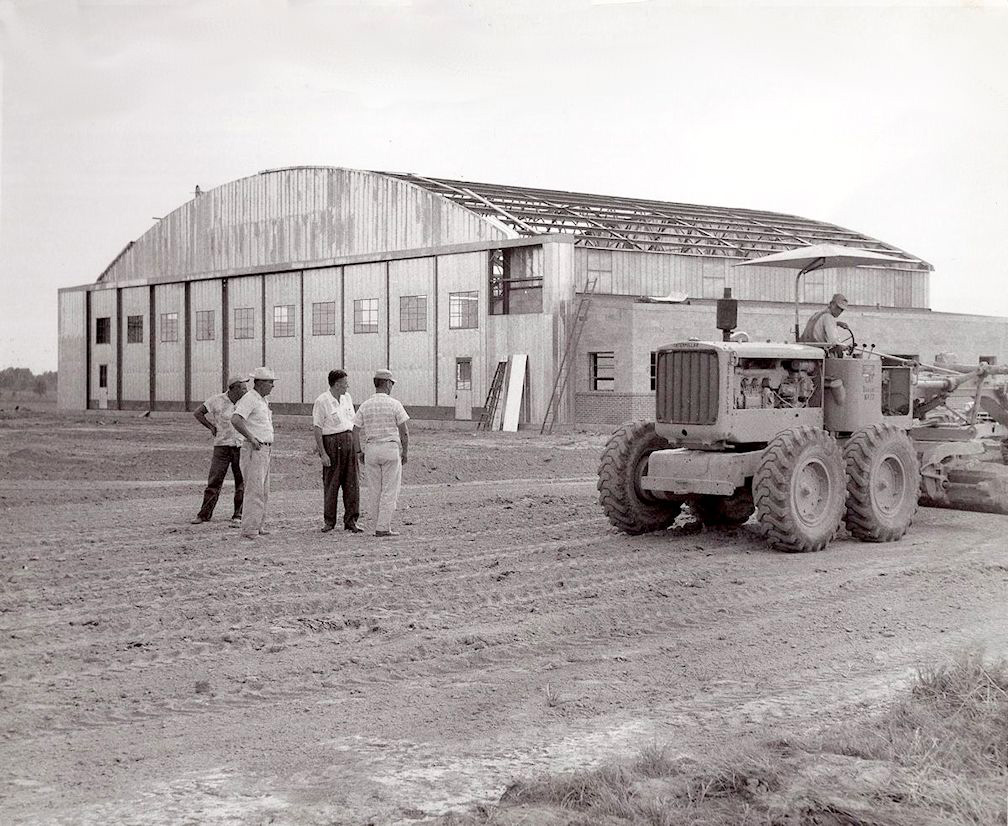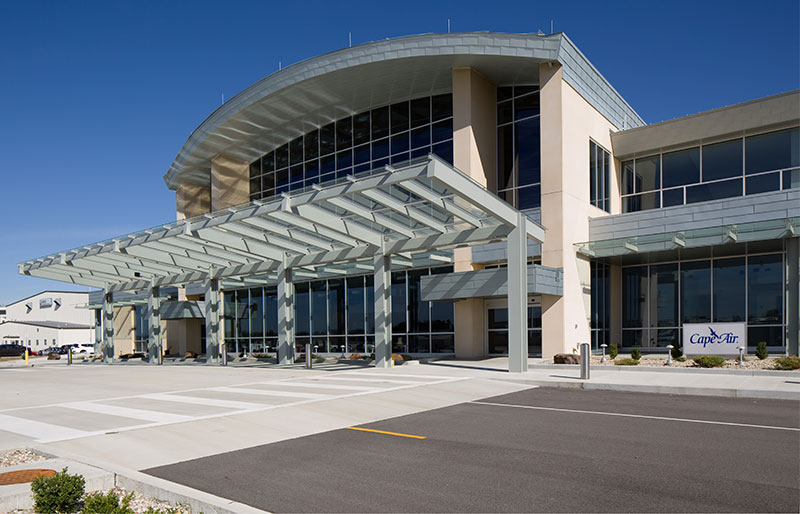
From Grass To Concrete: The Veterans Airport
Story by Bernard A. Paul
“Essential.” That’s the term best used to describe Veterans Airport. With its 8000-foot runway and sophisticated electronic landing systems, today’s Veterans Airport certainly lives up to its federal designation as an “Essential Air Service” airport. It is the largest Illinois airport serving air carriers south of Springfield. More than 235,000 people live and work within 35 miles of the airport and can depend upon it for their transportation connections to St. Louis and the world. The airport’s growth has been a long story of hard work and dedication by a handful of far-sighted leaders.
Back in 1926, when stunt pilot and barnstormer Charles “Slim” Lindbergh flew his biplane out of a grassy field over by Carterville, airports were unknown. Any level spot where an aviator could set his craft down was about the best he could hope for. But in 1930, Marion’s aviation pioneer, Fred Valentin, opened his 100 acre landing field east of Marion. Marion Airport, as it was known, had three cinder-surfaced runways arranged in a triangular pattern. The hanger and airport office were located in a former bus garage along old Route 13 East, where Fabick Machinery Co. now stands. Valentin trained an estimated 1500 pilots during his years in the business. Many of those aviators went into the military at the start of World War II, including Capt. Robert Duncan, holder of the Navy Cross, and a Hellcat ace of the South Pacific. The airline terminal at today’s Airport is named in honor of Captain Duncan.

After the war, returning veterans used their G.I. Bill entitlements to get their pilot licenses. Pilots who had been trained to fly in the military kept up their aviation skills, too, and both groups bought Pipers and Cessnas in record numbers. Fred Valentin had the foresight to take his flying service to a larger field west of Marion and south of Energy. He named the new runway “Macarin Field,” using the combined names of Marion, Carterville and Herrin. The wisdom of this move was made manifest a few years later when a modern four-lane Route 13 was re-located along the south end of the airport, and Interstate 57 was constructed just east of the field. Nothing could have made the airport more centralized and convenient for residents of Williamson County and Southern Illinois.
In 1948, Mr. Valentin sold his Macarin airport to the Veterans Airport Authority. A referendum had voted for the establishment of the Authority, passing unanimously in all townships of Williamson County except Stonefort. The Airport Board today consists of six members appointed by the leaders of the cities over 5000 population and by the County Board of Commissioners.
With the support of the people of Williamson County, the Airport’s growth has been constant and spectacular. The Veterans Airport now covers more than 1300 acres. Many improvements have taken place. Additional runways have been added, then lengthened and widened, then heavily re-paved. In 1953 Ozark Airlines began passenger service from Marion to St. Louis and other major hub airports. After Ozark, other airlines, including Britt Airways, Air Midwest, Northwest Airlink, Trans World Express, American Connection, Mesa Airlines, and Geat Lakes Airline, have provided continuous scheduled airline service for our area.
An F.A.A.-approved Air Traffic Control tower and a new terminal building were built, and an industrial park and a National Guard Armory were located adjacent to the Airport. A new corporate hanger and additionalT-hangers have been constructed. Ample taxiways and ramps augment the two hard-surfaced all-weather runways. Today, with the arrival of distribution Aisin’s auto parts plant and the tertiary care Heartland Medical Center, all located within a stone’s throw of the Airport, new business and professional construction is evident all around the field. Land in the Airport’s business center, and in tracts adjoining it, is leasing at premium prices. Aeroflite, the old fixed base operator at the Airport, provided flight instruction, aviation maintenance, charter service and fuels for almost 50 years. Charles C. Stoker ran Aeroflite and also served as Airport Manager from 1957 until his retirement in 1998. In 2004, more than 290,000 gallons of aviation fuel were pumped into thirsty airplanes at the Airport. Air express company planes regularly depart the Airport, carrying packages and overnight correspondence to every part of the country. In 2004 one air express company alone off-loaded more than a million pounds of air freight at the airport, and sent out yet another half-a-million pounds from here. Midwest Aviation currently serves as the airport’s fixed base operator providing the same services.
Presidents Kennedy, Nixon, Ford, Carter, Reagan, and both Bushes have visited the Airport, as well as many State and National officers and candidates for public office. The heaviest concentration of aircraft was during one period of President Ford’s visit when “Air Force One,” three C-141 cargo jets and 42 visiting corporate and civilian aircraft were all on the field. The Airport terminal is a favored spot for “whistle- stop” political speeches and public announcements by incumbents. Numerous entertainers and sports teams on their way to venues around Southern Illinois first fly in to Williamson County because of our long runways.

